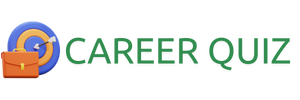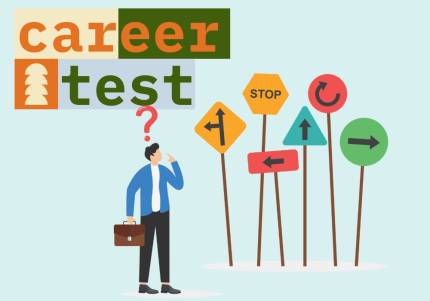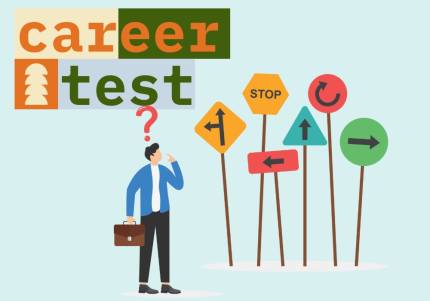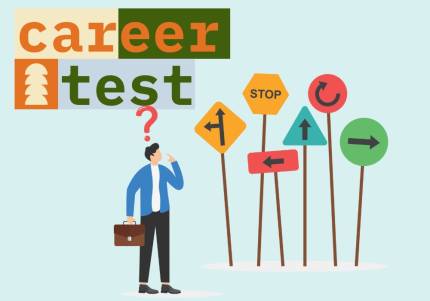Career Tests for Recent Graduates: Figuring It Out
- 22 May 2025
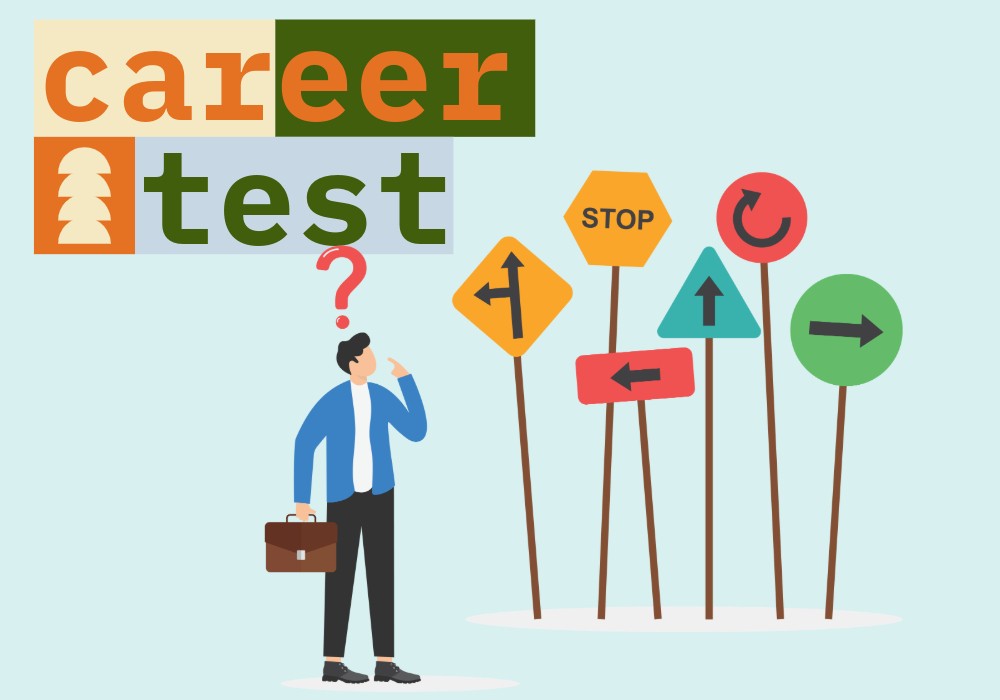
The Post-Graduation Navigation Challenge
The transition from academic to professional environments represents one of early adulthood's most significant developmental challenges—a period when structured educational pathways suddenly give way to the ambiguous terrain of career development. Research indicates that approximately 40% of recent graduates report feeling underprepared for this transition despite academic success, with many struggling to translate educational achievements into professional direction. This widespread "quarter-life crisis" phenomenon often manifests as decision paralysis, premature job hopping, or default acceptance of misaligned opportunities.
Career assessment during this critical transition period provides valuable structure for converting academic accomplishments into workplace contributions while clarifying authentic professional priorities. Unlike educational assessments focused on academic potential, post-graduation instruments specifically address workplace readiness, professional identity formation, and initial career positioning. This targeted approach helps graduates bridge the perception gap between academic success metrics and professional performance expectations.
Assessment Needs for Recent Graduates
Recent graduates face unique assessment needs distinct from both student and established professional populations. Their limited workplace experience means traditional work history-based evaluations provide insufficient guidance, while academic performance metrics often inadequately predict professional satisfaction or success. Effective assessment during this transition period must address several graduate-specific challenges while leveraging available data points.
Primary assessment needs include translating academic accomplishments into workplace competencies, identifying transferable skills that transcend specific roles, clarifying workplace environment preferences based on limited exposure, articulating professional identity distinct from student identity, and establishing realistic expectations regarding entry-level realities. Instruments addressing these specific needs help graduates navigate initial career decisions with greater confidence and clarity.
Key Assessment Focus Areas for Recent Graduates
- Transferable Skill Identification - Recognizing applicable capabilities from academic experiences
- Workplace Culture Preferences - Clarifying optimal professional environments
- Professional Identity Formation - Developing authentic workplace persona
- Early Career Expectations - Establishing realistic first-job parameters
- Growth Orientation Assessment - Identifying developmental priorities
Recommended Assessment Instruments
Several assessment tools address the unique needs of recent graduates with customized approaches. The Workplace Readiness Inventory evaluates preparedness for professional environments across key competency domains including communication, collaboration, technology utilization, and professional etiquette. The Career Transitions Assessment specifically addresses the academic-to-workplace shift by identifying potential adjustment challenges and coping strategies.
The Transferable Skills Analysis helps graduates recognize and articulate capabilities developed through coursework, research projects, extracurricular leadership, and part-time employment. The Professional Interests Profile identifies promising industry sectors and functional roles based on natural preferences and demonstrated capabilities. For graduates uncertain about initial direction, the Entry Path Options Assessment evaluates compatibility with various first-job strategies including general corporate training programs, specialized industry positions, entrepreneurial ventures, and service/fellowship opportunities.
Comparison of Recent Graduate Assessments
| Assessment | Primary Focus | Format | Best For |
|---|---|---|---|
| Workplace Readiness Inventory | Professional environment preparation | Multi-section evaluation | Identifying development needs |
| Career Transitions Assessment | Academic-to-workplace adjustment | Scenario-based questionnaire | Anticipating adaptation challenges |
| Transferable Skills Analysis | Capability identification | Experience-based inventory | Resume and interview preparation |
| Professional Interests Profile | Industry/function matching | Comparative assessment | Job search targeting |
| Entry Path Options Assessment | First-job strategy evaluation | Structured decision framework | Approach clarification |
Technical vs. Liberal Arts Graduate Considerations
Assessment needs often differ significantly between technical discipline graduates and liberal arts/humanities graduates. Technical program graduates typically benefit from assessments helping them identify specific application environments for their specialized knowledge and potential growth trajectories within their field. These structured assessments often map technical capabilities against industry-specific requirements while evaluating work style alignment with different organizational contexts.
Liberal arts graduates often require assessments that help articulate the professional relevance of their more versatile but less obviously vocational educations. These instruments typically focus on identifying transferable capabilities like critical thinking, communication, analysis, and contextual adaptation that apply across diverse professional settings. Narrative-focused assessments help these graduates construct compelling professional stories connecting their educational experiences to workplace contributions.
Integrating Personal and Professional Identity
Beyond specific career direction, recent graduates often grapple with integrating their emerging adult identities with new professional personas. Specialized values-based assessments help graduates recognize potential alignment or conflict between personal priorities and professional expectations. These instruments explore questions around work-life boundaries, ethical frameworks, lifestyle preferences, and long-term aspirations that significantly impact early career satisfaction.
The Work-Life Integration Assessment helps graduates articulate boundaries and expectations regarding how work fits within broader life priorities. The Professional Values Inventory identifies core workplace principles guiding decision-making and organizational fit evaluations. The Purpose Alignment Assessment helps graduates connect career choices to meaningful personal contribution narratives beyond compensation or advancement considerations.
Implementation for Maximum Impact
Career assessment for recent graduates yields greatest benefit when embedded within comprehensive transition support rather than implemented as isolated evaluations. Effective programs combine assessment with interpretation guidance, targeted skill development, and strategic networking opportunities. Many university career centers now extend assessment access through the critical first year post-graduation, when graduates often encounter unanticipated workplace realities requiring perspective adjustment.
Progressive organizations recognize that assessment-guided onboarding significantly improves early career satisfaction and productivity. Companies implementing structured assessment during initial employment periods show 62% higher retention rates among new graduate hires compared to those without such programs. These assessments identify optimal project assignments, mentoring relationships, and development opportunities aligned with graduate strengths and growth areas. Rather than generic onboarding, assessment-informed integration accelerates professional identity formation and organizational commitment.
For maximum benefit, assessments should incorporate multiple feedback sources beyond self-reporting. The most effective programs combine self-assessment with manager observations, peer feedback, and objective performance metrics to create comprehensive developmental profiles. This multi-perspective approach helps graduates reconcile self-perception with workplace realities while building critical professional self-awareness.
Digital Assessment Innovations
Recent technological advances have significantly enhanced career assessment effectiveness for the digital-native graduate population. Interactive assessment platforms now incorporate gamification elements, scenario simulations, and artificial intelligence analysis to increase engagement and insight depth. These innovations prove particularly valuable for graduates uncertain about specific industries or roles by providing low-risk exploration opportunities before significant career investments.
The Virtual Work Experience Simulator creates realistic workplace scenarios across diverse professional environments, helping graduates evaluate fit before actual employment commitments. AI-Enhanced Strength Analytics algorithms identify patterns across educational experiences, project outcomes, and preference indicators to suggest promising career directions that graduates might not independently consider. Continuous Micro-Assessment tools replace point-in-time evaluations with ongoing data collection integrating with professional activities for more dynamic career navigation.
Common Assessment Pitfalls to Avoid
Despite their benefits, career assessments present potential hazards when misapplied or misinterpreted during graduate transitions. The most common implementation errors include:
- Overreliance on assessment results: Treating outcomes as definitive rather than directional guidance
- Insufficient context consideration: Failing to account for economic conditions, industry trends, and regional opportunities
- Premature specialization pressure: Pushing graduates toward narrow paths before adequate exploration
- Validation gaps: Applying instruments developed for experienced professionals without graduate-specific adaptations
- Neglecting implementation support: Providing results without actionable application strategies
Effective assessment programs mitigate these risks through proper contextualization, multiple assessment integration, and ongoing interpretive support. Graduates should understand assessments as developmental tools rather than definitive professional prescriptions.
The Self-Directed Assessment Approach
For graduates without access to formal assessment programs through universities or employers, self-directed assessment strategies offer valuable alternatives. Several approaches help structure independent career exploration:
- Structured reflection protocols that systematically evaluate educational experiences, project outcomes, and activity preferences
- Feedback collection templates for gathering input from professors, advisors, and internship supervisors
- Experience sampling methods that track engagement and satisfaction across different types of activities
- Skills documentation frameworks for cataloging capabilities with supporting evidence
- Decision journaling practices that record career-related choices and subsequent outcomes
These approaches, while less standardized than formal instruments, provide valuable structure for graduates navigating early professional decisions independently. Self-directed assessment proves particularly valuable during economic disruptions when traditional career pathways appear uncertain.
Conclusion: Assessment as Navigation Tool
Career assessment represents not an endpoint but a navigation instrument for the extended professional journey beginning at graduation. The most effective graduates approach assessment as an ongoing process rather than a one-time event—regularly reevaluating direction as they accumulate workplace experience and clarify professional identity.
For institutions supporting graduate transitions, assessment programs require consistent updating to reflect evolving workplace realities. Today's most effective programs incorporate emerging workplace trends like remote collaboration capabilities, digital fluency requirements, entrepreneurial competencies, and cross-cultural adaptability.
By providing structured frameworks for professional self-understanding, well-designed assessment processes help graduates transform academic achievements into workplace contributions while establishing sustainable career foundations. Rather than prescribing specific paths, these tools empower graduates with self-knowledge that informs authentic professional choices throughout their careers.
